What Are the Benefits of Crypto Index Investing? Why Smart Investors Choose Indices in 2025
%201.svg)
%201.svg)

The crypto market in 2025 is more advanced, more crowded, and more volatile than ever before. Thousands of tokens compete for attention, and prices can move dramatically in hours. For many investors—especially those who want to participate without day-trading—crypto index investing is the smartest and simplest way to grow wealth in the digital asset space.
But what exactly are the benefits of investing in a crypto index?
In this article, we’ll walk through the major advantages of crypto index investing—especially compared to picking individual tokens—and explain why more investors are turning to indices for long-term success.
What Is a Crypto Index?
A crypto index is a curated portfolio of cryptocurrencies bundled together to represent a market segment, investment strategy, or theme. It works just like an index fund or ETF in traditional finance—except it’s built for the crypto world.
Popular types of indices include:
- Market Cap Indices (e.g., Top 10 or Top 100 cryptos)
- Thematic Indices (e.g., AI Tokens, DeFi, Layer 1s)
- AI-Powered Indices (automatically optimized using data models)
- On-Chain Tokenized Indices (composable in DeFi protocols)
The 8 Biggest Benefits of Crypto Index Investing
✅ 1. Diversification
Perhaps the biggest benefit of a crypto index is built-in diversification. Instead of betting on a single token, you gain exposure to multiple assets at once.
This spreads your risk. If one token underperforms or crashes, others in the basket can offset the loss—making your portfolio more resilient.
Example:
A DeFi Index might hold AAVE, UNI, LDO, and GMX. If UNI struggles, strong performance from LDO or GMX could still deliver overall gains.
✅ 2. Simplified Investing
Crypto can be complex—new tokens launch daily, narratives shift, and technical analysis isn’t for everyone.
Indices simplify your decision-making. You don’t need to constantly:
- Analyze charts
- Read whitepapers
- Follow token announcements
Instead, you choose an index that fits your goals, invest once, and let the structure handle the rest.
✅ 3. Automated Portfolio Management
Most crypto indices rebalance automatically—meaning they adjust the weights of the tokens in the basket based on performance, market cap, or AI-generated signals.
Rebalancing helps:
- Lock in profits when a token pumps
- Reduce exposure to weak assets
- Maintain a consistent strategy
For example, Token Metrics AI Indices rebalance weekly based on 80+ data points per token, including volatility, momentum, and sentiment.
✅ 4. Thematic Exposure to Emerging Trends
Crypto moves in narratives: AI, Memecoins, Real World Assets (RWA), Gaming, and more. Sector-based indices allow you to invest in these narratives without trying to guess which token will lead the trend.
Want to ride the AI boom? Buy an AI Tokens Index.
Want exposure to new L1 blockchains? Choose a Layer 1 Index.
Thematic investing through indices is one of the most effective ways to align with where capital is flowing.
✅ 5. Lower Risk Than Single-Token Investing
Individual tokens can be incredibly volatile—and if you choose the wrong one, your entire investment may collapse.
Indices smooth out volatility by combining multiple tokens. While the overall market is still risky, your exposure is far more controlled.
AI-powered indices go even further by:
- Exiting bearish tokens
- Moving into stablecoins during downturns
- Increasing weight in bullish assets
This is dynamic risk management, not just passive exposure.
✅ 6. Reduced Emotional Bias
Let’s face it—crypto investors are often their own worst enemies.
- Panic selling at the bottom
- FOMO buying at the top
- Overtrading
- Holding losing tokens too long
Index investing removes these human emotions. Your portfolio follows rules, not feelings. Whether it’s a passive index or an AI-managed one, you gain disciplined, unemotional investing.
✅ 7. Accessibility and Affordability
Crypto indices are now easier than ever to access. Most platforms allow you to start investing with as little as $50 to $100.
Depending on the platform, you can:
- Invest using a crypto wallet (DeFi)
- Use a credit card or USDC on centralized platforms
- Hold a single index token that represents the entire portfolio
This makes crypto indexing ideal for beginners, busy professionals, and even institutions.
✅ 8. Performance Optimization (With AI Indices)
Passive indices offer simplicity and safety. But if you want to outperform the market, AI-powered indices give you an edge.
Token Metrics AI Indices, for example:
- Scan hundreds of tokens weekly
- Identify bullish and bearish trends
- Reallocate capital to outperform traditional strategies
In 2024 and early 2025, many AI indices beat market cap indices by double-digit margins—especially during volatile market phases.
Real-Life Example: How a Crypto Index Adds Value
Let’s say you want to invest in DeFi but don’t know which tokens to pick.
You choose the Token Metrics AI DeFi Index. It currently includes:
- AAVE
- LDO
- RUNE
- DYDX
Each week, it checks market signals. If LDO looks weak, the index might reduce exposure and allocate more to DYDX. If the entire market looks bearish, it might reduce risk by shifting into USDC.
You don’t need to lift a finger—but your portfolio stays optimized.
Bonus Benefit: Indices Work for Every Investor Type

Final Thoughts: Indices Are the Smartest Way to Invest in Crypto
Whether you're new to crypto or looking to upgrade your portfolio strategy, crypto indices offer unmatched benefits in 2025:
- Broad diversification
- Automated risk management
- Exposure to high-growth themes
- Simpler, smarter investing
Platforms like Token Metrics offer next-generation AI-driven indices tailored to your goals, helping you grow your portfolio while reducing the stress of crypto investing.
If you want to participate in crypto’s upside without constantly worrying about the downside, crypto indices are your best bet.
AI Agents in Minutes, Not Months


Create Your Free Token Metrics Account





.png)
Recent Posts
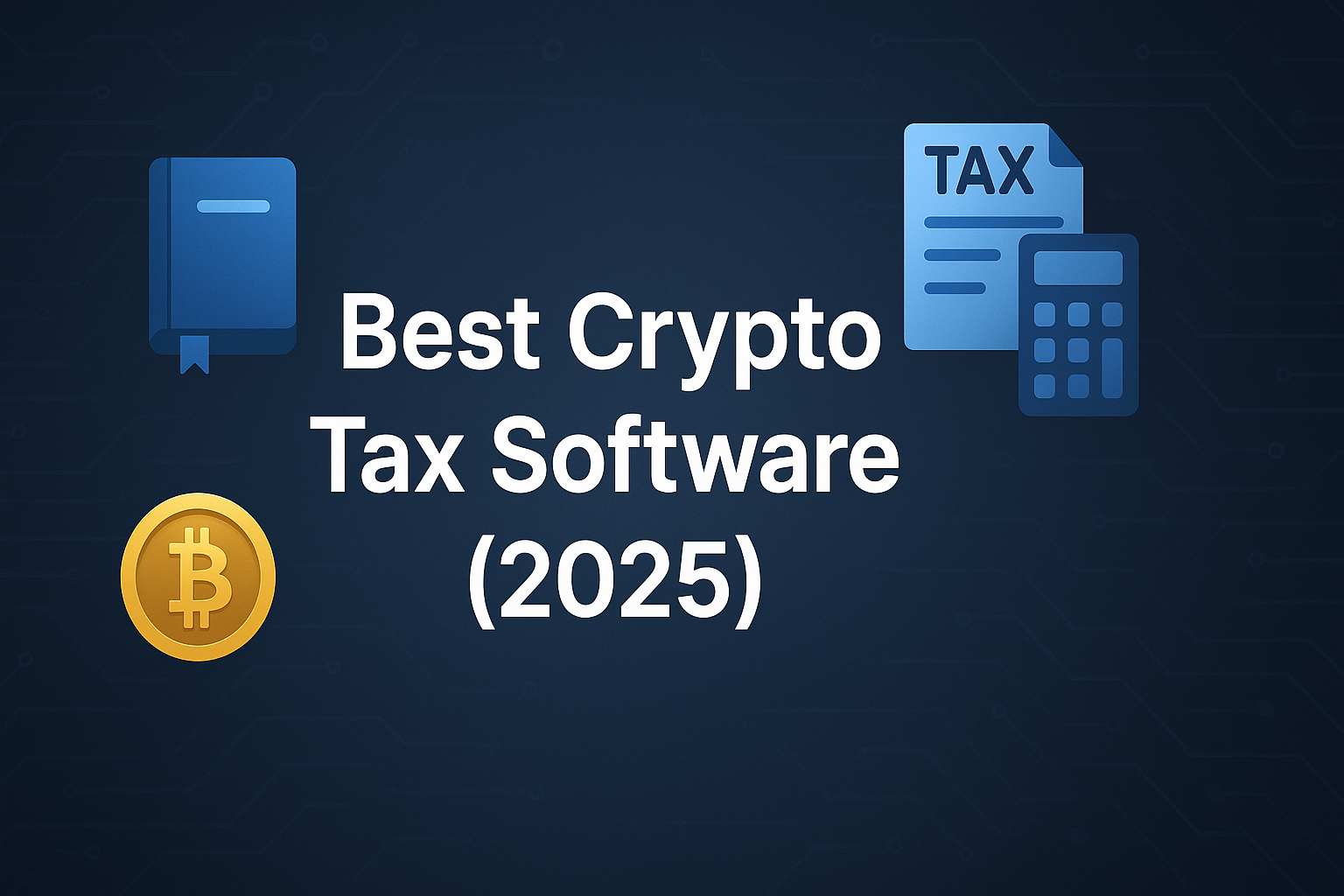
Best Crypto Tax Software (2025)
%201.svg)
%201.svg)
Why crypto tax reporting & portfolio reconciliation software Matters in September 2025
Crypto taxes are messy—DeFi, NFTs, cross-chain bridges, airdrops, staking, and perpetuals all create taxable events. The best crypto tax software helps you import everything, reconcile cost basis, and generate compliant reports (e.g., IRS Form 8949/Schedule D) in minutes. In one line: crypto tax software is a tool that ingests your on-chain and exchange data and produces compliant tax reports for your jurisdiction.
In 2025, new broker reporting rules and evolving national guidance raise the stakes for accuracy. This guide prioritizes global coverage, robust reconciliations for DeFi/NFTs, and clear pricing. Whether you’re a retail investor, active DeFi/NFT trader, or a tax pro, you’ll find vetted options below, plus a quick decision map and setup checklist. (See Sources section for official docs cited.)
How We Picked (Methodology & Scoring)
- What we scored (weights): Scale & data handling (30% liquidity/coverage in practice—can it ingest many venues at volume?), Security (25%) including 2FA, data handling, disclosures; Coverage (15%) of assets/DeFi/NFTs/chains; Costs (15%) (transparent plans, value at higher tx counts); UX (10%) (import helpers, error resolution); Support (5%) (tax-pro help, chat, docs).
- Data sources: Official product and security pages, pricing and docs; limited cross-checks with widely cited market datasets for context. We do not rely on affiliate reviews.
- Freshness: Last updated September 2025; we noted regional changes (e.g., deprecations/partnerships) from official announcements. Koinly+2ZenLedger+2
Top 10 crypto tax reporting & portfolio reconciliation software in September 2025
1. Koinly — Best for fast setup across 20+ countries

{
"name":"Koinly",
"url":"https://koinly.io/",
"tagline":"Best for fast setup across 20+ countries",
"why_use_it":"Polished imports, broad exchange/wallet support, and clean reports you can hand to your CPA. Strong retail UX with preview-before-pay and ready-made IRS forms. Good balance of speed and depth for DeFi/NFTs.",
"best_for":"Retail investors; casual DeFi users; U.S., EU & APAC filers needing standard forms",
"notable_features":["Free preview of gains","Form 8949 & Schedule D exports","Integrations for major exchanges/wallets"],
"fees_notes":"Free preview; paid tiers scale by transaction count.",
"regions":"Global",
"alternatives":["CoinLedger","CoinTracker"]
}
Key facts per official site: global availability, free preview, IRS forms. Koinly+1
2. CoinLedger — Best for U.S. filers who want simple, fast forms
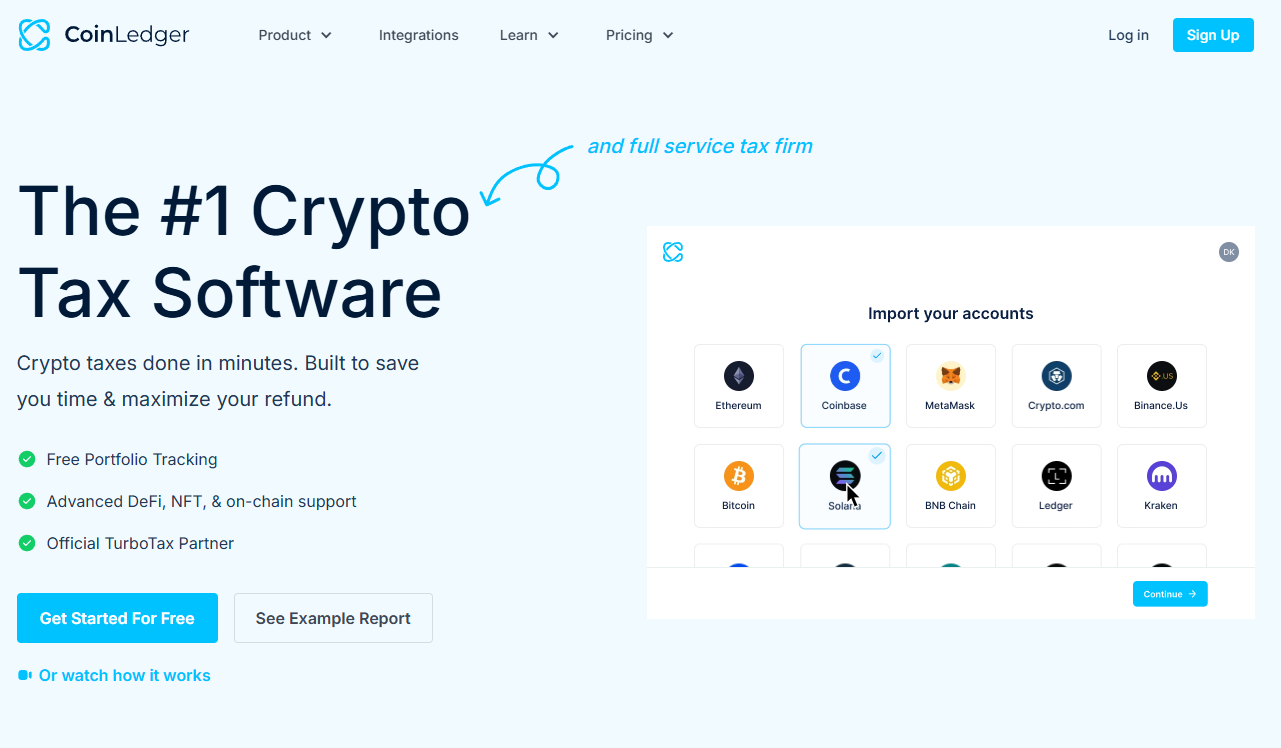
{
"name":"CoinLedger",
"url":"https://coinledger.io/",
"tagline":"Best for U.S. filers who want simple, fast forms",
"why_use_it":"Straightforward import flow with strong U.S. forms and helpful education. Good DeFi/NFT coverage for most retail needs without overcomplicating the setup.",
"best_for":"U.S. filers; creators/traders mixing CEX, NFTs, staking; DIY with CPA handoff",
"notable_features":["Instant tax forms","DeFi & NFT support","Unlimited revisions"],
"fees_notes":"Tiered by transaction count; unlimited wallets/exchanges supported.",
"regions":"US/Global",
"alternatives":["Koinly","CryptoTaxCalculator"]
}
Highlights: instant forms, DeFi/NFT support, pricing by report tier. CoinLedger+1
3. CoinTracker — Best portfolio + tax combo
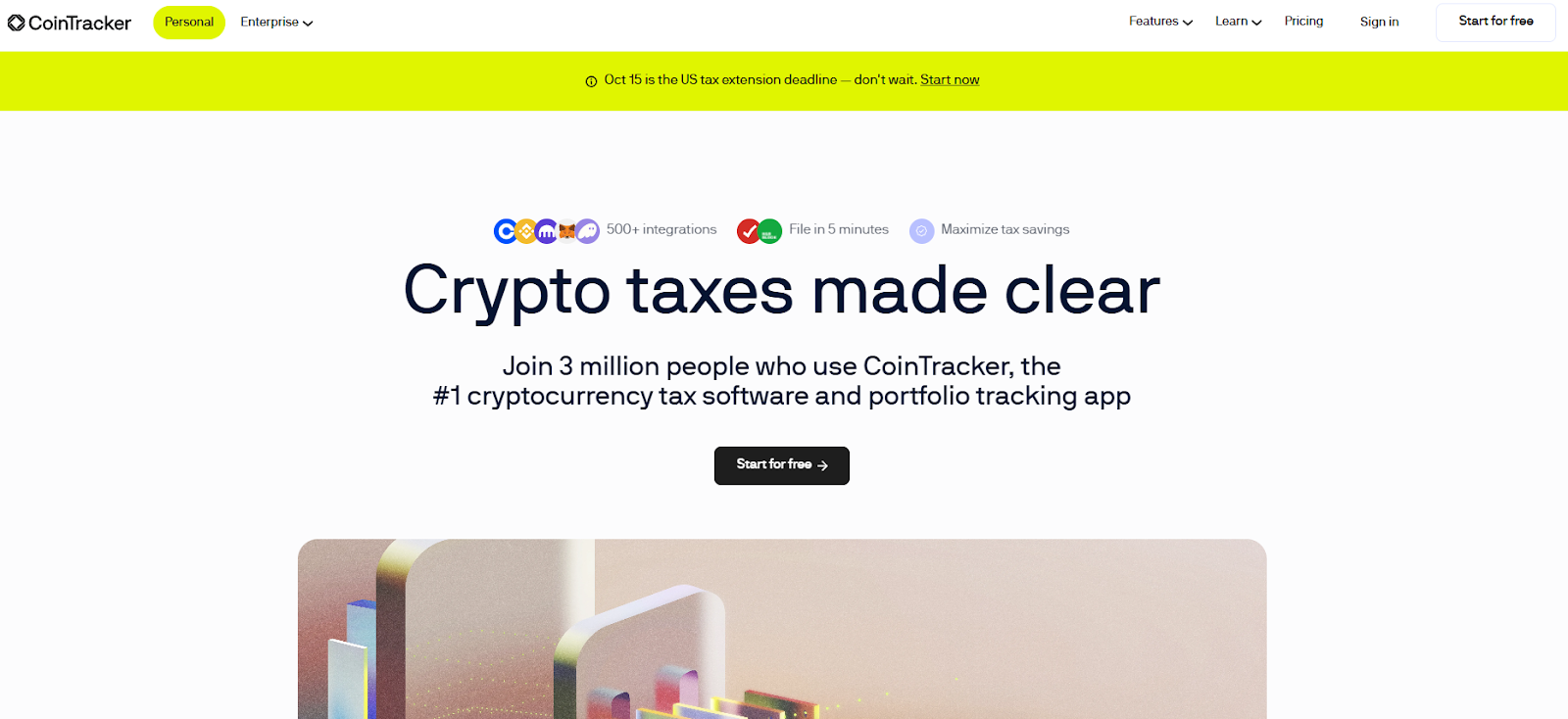
{
"name":"CoinTracker",
"url":"https://www.cointracker.io/",
"tagline":"Best portfolio + tax combo",
"why_use_it":"Combines strong portfolio tracking with tax reporting and broad integrations. Good fit if you want year-round tracking and tax filing in one place.",
"best_for":"Buy-and-hold investors; multi-exchange users; Coinbase ecosystem",
"notable_features":["Portfolio + tax in one","TurboTax & H&R Block export","Free tax calculator"],
"fees_notes":"Free plan + multiple paid tiers based on transaction counts and features.",
"regions":"Global",
"alternatives":["CoinTracking","Koinly"]
}
References: portfolio/tax plans; free 2025 tax calculator. cointracker.io+1
4. CryptoTaxCalculator — Best for DeFi/NFT power users
{
"name":"CryptoTaxCalculator",
"url":"https://cryptotaxcalculator.io/",
"tagline":"Best for DeFi/NFT power users",
"why_use_it":"Known for granular on-chain parsing (contracts, smart labels) and robust inventory methods. Clear U.S. guide coverage plus deep international docs.",
"best_for":"Heavy DeFi/NFT traders; cross-chain users; Coinbase users wanting discounts",
"notable_features":["Advanced DeFi categorization","Multiple inventory methods (FIFO/LIFO/HIFO)","Tax loss harvesting tools"],
"fees_notes":"Free import/preview; pay for reports and advanced tools; tiers by tx count.",
"regions":"Global (strong US/AU/EU support)",
"alternatives":["CoinLedger","Coinpanda"]
}
See pricing & free-trial notes; U.S. 2025 guide and integrations. Coinbase Help+3Crypto Tax Calculator+3Crypto Tax Calculator+3
5. ZenLedger — Best for tax-pro assistance on demand
{
"name":"ZenLedger",
"url":"https://zenledger.io/",
"tagline":"Best for tax-pro assistance on demand",
"why_use_it":"DIY software plus optional tax strategy consults and filing assistance. Solid reporting with emphasis on loss harvesting and a unified spreadsheet view.",
"best_for":"U.S. filers; users wanting hands-on help; mixed income (staking/mining)",
"notable_features":["Tax loss harvesting tool","Grand Unified Spreadsheet","In-house tax services"],
"fees_notes":"Free tier available; premium plans and paid consults/tax filing.",
"regions":"US/Global",
"alternatives":["TokenTax","Koinly"]
}
Features & services from official pages. ZenLedger+2ZenLedger+2
6. TokenTax — Best full-service + complex reconciliations
{
"name":"TokenTax",
"url":"https://tokentax.co/",
"tagline":"Best full-service + complex reconciliations",
"why_use_it":"Hybrid model: powerful software plus CPAs who will reconcile edge cases (bridges, LPs, DEX fees). Plans scale up to white-glove VIP with audit support.",
"best_for":"Active traders; complex DeFi; high-net-worth; back-tax cleanups",
"notable_features":["CPA-backed filing","Advanced accounting methods (FIFO/LIFO/HIFO)","Enterprise & VIP options"],
"fees_notes":"Multiple tiers from DIY to VIP; enterprise custom pricing.",
"regions":"Global",
"alternatives":["ZenLedger","Ledgible"]
}
Plans & accounting methods per official site. TokenTax+2TokenTax+2
7. Coinpanda — Best for multi-country filers
{
"name":"Coinpanda",
"url":"https://coinpanda.io/",
"tagline":"Best for multi-country filers",
"why_use_it":"Strong global coverage (65+ countries) and exports for local forms. Handy if you moved jurisdictions or need non-U.S. reports alongside IRS forms.",
"best_for":"Expats; EU/APAC filers; users juggling multiple tax regimes",
"notable_features":["Country-specific reports","IRS Form 8949 & Schedule D","Broad exchange/wallet support"],
"fees_notes":"Pricing tiers by transaction count; free to try.",
"regions":"Global (65+ countries)",
"alternatives":["Blockpit","CryptoTaxCalculator"]
}
Coverage and report exports per official pages. Coinpanda+2Coinpanda+2
8. Ledgible — Best for tax professionals & firms
{
"name":"Ledgible",
"url":"https://ledgible.io/",
"tagline":"Best for tax professionals & firms",
"why_use_it":"Built for tax pros with client billing, pro dashboards, and accounting integrations. Good bridge between retail clients and professional software workflows.",
"best_for":"CPAs/EAs; multi-client firms; advanced retail users with a pro",
"notable_features":["Pro portal & client billing","1099/8949/Schedule D outputs","Accounting/ERP integrations"],
"fees_notes":"Pro portal free; clients pay per-report (customizable).",
"regions":"US/Global",
"alternatives":["TokenTax","CoinTracker"]
}
Professional focus and pricing model per official site. Ledgible+1
9. CoinTracking — Best for data nerds & long-time traders
{
"name":"CoinTracking",
"url":"https://cointracking.info/",
"tagline":"Best for data nerds & long-time traders",
"why_use_it":"One of the longest-running portfolio + tax tools with deep historical imports and flexible reports. Appeals to users with large archives and custom CSVs.",
"best_for":"Power users; traders with legacy data; hybrid hodlers/traders",
"notable_features":["300+ exchange/wallet imports","DeFi/NFT support","Detailed tax and performance reports"],
"fees_notes":"Free tier + paid plans; supports many jurisdictions.",
"regions":"Global",
"alternatives":["CoinTracker","Coinpanda"]
}
Core claims from official product pages. cointracking.info+1
10. Blockpit — Best for Europe & Accointing migrations
{
"name":"Blockpit",
"url":"https://www.blockpit.io/",
"tagline":"Best for Europe & Accointing migrations",
"why_use_it":"EU-focused platform with clear U.S. support and a streamlined migration path from Accointing (which sunset in 2024). Good documentation and transparent pricing.",
"best_for":"EU users; ex-Accointing users; mixed CEX+DeFi portfolios",
"notable_features":["Accointing migration","IRS-aligned U.S. reports","Mobile app & portfolio tracking"],
"fees_notes":"Free tracking; paid tax reports tiered by transactions.",
"regions":"EU/US (Global coverage increasing)",
"alternatives":["Coinpanda","CryptoTaxCalculator"]
}
Accointing migration + pricing and U.S. alignment per official pages. Blockpit+3Blockpit Helpcenter+3Blockpit+3
Decision Guide: Best By Use Case
- Quick U.S. filing, simple stack: CoinLedger or Koinly
- Year-round portfolio + taxes in one: CoinTracker or CoinTracking
- Heavy DeFi/NFTs or complex on-chain: CryptoTaxCalculator or TokenTax (full service)
- Tax pro / multi-client firm: Ledgible
- Multi-country reporting (EU/APAC): Coinpanda or Blockpit
- Migrating from Accointing: Blockpit
- Want audit support / VIP: TokenTax
How to Choose the Right crypto tax reporting & portfolio reconciliation software (Checklist)
- Jurisdiction & forms: Does it export the forms you need (e.g., IRS 8949/Schedule D; HMRC; ATO)?
- Integrations & coverage: Wallets, exchanges, chains, DeFi protocols, NFTs you actually use.
- Reconciliation depth: Handles bridges, LP removals, MEV, staking rewards, airdrops, and fees correctly.
- Cost model: Transactions-based tiers vs. flat; consider your volume this year and next.
- UX & error fixing: Clear warnings, duplicate detection, missing cost-basis tools.
- Security: 2FA, read-only API keys, data retention controls.
- Support: CPA access, pro plans, or community docs.
- Red flags: No recent updates; vague pricing; no exportable audit trail.
Use Token Metrics With Any crypto tax reporting & portfolio reconciliation software
- AI Ratings to screen coins and reduce churn trading.

- Narrative Detection to spot momentum before it hits your P&L.
- Portfolio Optimization to size positions intelligently.
- Alerts/Signals to avoid taxable churn and plan harvest windows.
Workflow: Research in Token Metrics → Select provider above → Import/sync & reconcile → Monitor with TM alerts.
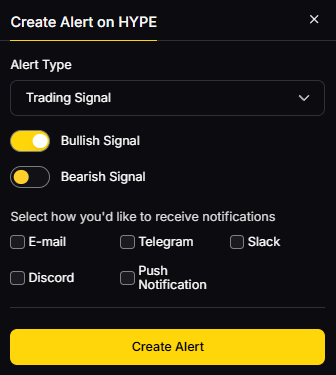
Primary CTA: Start free trial.

Security & Compliance Tips
- Enable 2FA; use read-only API keys; revoke old keys.
- Keep a wallet hygiene routine (label internal transfers, track bridges and gas).
- Maintain off-exchange backups of CSVs and address lists.
- Follow KYC/AML rules at your provider; understand 1099/DA broker reporting starting in 2025. TurboTax
This article is for research/education, not financial advice.
Beginner Mistakes to Avoid
- Treating transfers as taxable sales (fix with proper labeling).
- Ignoring fees and LP add/remove entries (cost basis breaks).
- Mixing personal and business wallets without tagging.
- Waiting until April—fixing mismatches takes time.
- Relying on a single source export (always keep on-chain + CEX records).
FAQs
What is crypto tax software?
It’s software that aggregates your exchange, wallet, and on-chain activity to calculate cost basis and produce compliant tax forms for your jurisdiction. Most tools support IRS Form 8949/Schedule D in the U.S. and local equivalents elsewhere.
How do I file crypto taxes with software?
- Connect exchanges/wallets with read-only APIs or public addresses; 2) Import CSVs for gaps; 3) Review warnings/missing cost basis; 4) Generate forms and file directly or export to TurboTax/your CPA. Most tools offer a free preview before you pay. Koinly
Which crypto tax app is best for DeFi/NFTs?
CryptoTaxCalculator, TokenTax (with pro help), and Coinpanda have strong DeFi/NFT coverage. Choose based on your chains/protocols and whether you want full-service support. Crypto Tax Calculator+2TokenTax+2
What changed for 2025 U.S. crypto taxes?
Broker reporting (Form 1099-DA) begins for the 2025 tax year, expanding third-party information reporting. You still must report all crypto disposals even without a form. TurboTax
Can I use TurboTax with these tools?
Yes—most export to TurboTax/H&R Block or generate importable files. If you only used one exchange (e.g., Coinbase), you may be able to file directly; multi-platform activity benefits from a dedicated crypto tax app. cointracker.io+1
Is Crypto.com Tax still available?
No. Crypto.com deprecated its free tax tool in June 2024 and now partners with Koinly and TokenTax. Crypto.com Help Center
Conclusion + Related Reads
If you want fast, reliable filing, start with Koinly or CoinLedger. Need portfolio + tax together? Try CoinTracker or CoinTracking. For complex DeFi/NFTs, pick CryptoTaxCalculator or full-service TokenTax. Multi-country or EU-heavy? Coinpanda or Blockpit. Tax pros and firms should consider Ledgible.
Related Reads:
- Best Cryptocurrency Exchanges 2025
- Top Derivatives Platforms 2025
- Top Institutional Custody Providers 2025
Sources & Update Notes
We reviewed official product, pricing, guides, and security pages for each provider; we avoided third-party reviews for claims. Updated September 2025.
- Koinly — Home & Pricing pages. Koinly+1
- CoinLedger — Home & Pricing. CoinLedger+1
- CoinTracker — Home, Plans, Tax Calculator. cointracker.io+2cointracker.io+2
- CryptoTaxCalculator — US page, Pricing, US Tax Guide, Integrations notes. Crypto Tax Calculator+3Crypto Tax Calculator+3Crypto Tax Calculator+3
- ZenLedger — Home, Services, Filing pages. ZenLedger+2ZenLedger+2
- TokenTax — Home, Pricing, Accounting Methods guide. TokenTax+2TokenTax+2
- Coinpanda — Home, Pricing/Reports, Country coverage. Coinpanda+2Coinpanda+2
- Ledgible — Home, Pricing/Pro. Ledgible+1
- CoinTracking — Home & Tax report pages. cointracking.info+1
- Blockpit — Home, Pricing, Accointing migration & product updates. Blockpit+3Blockpit+3Blockpit+3
Context: TurboTax crypto changes; Crypto.com Tax deprecation; Coinbase discounts page. TurboTax+2Crypto.com Help Center+2
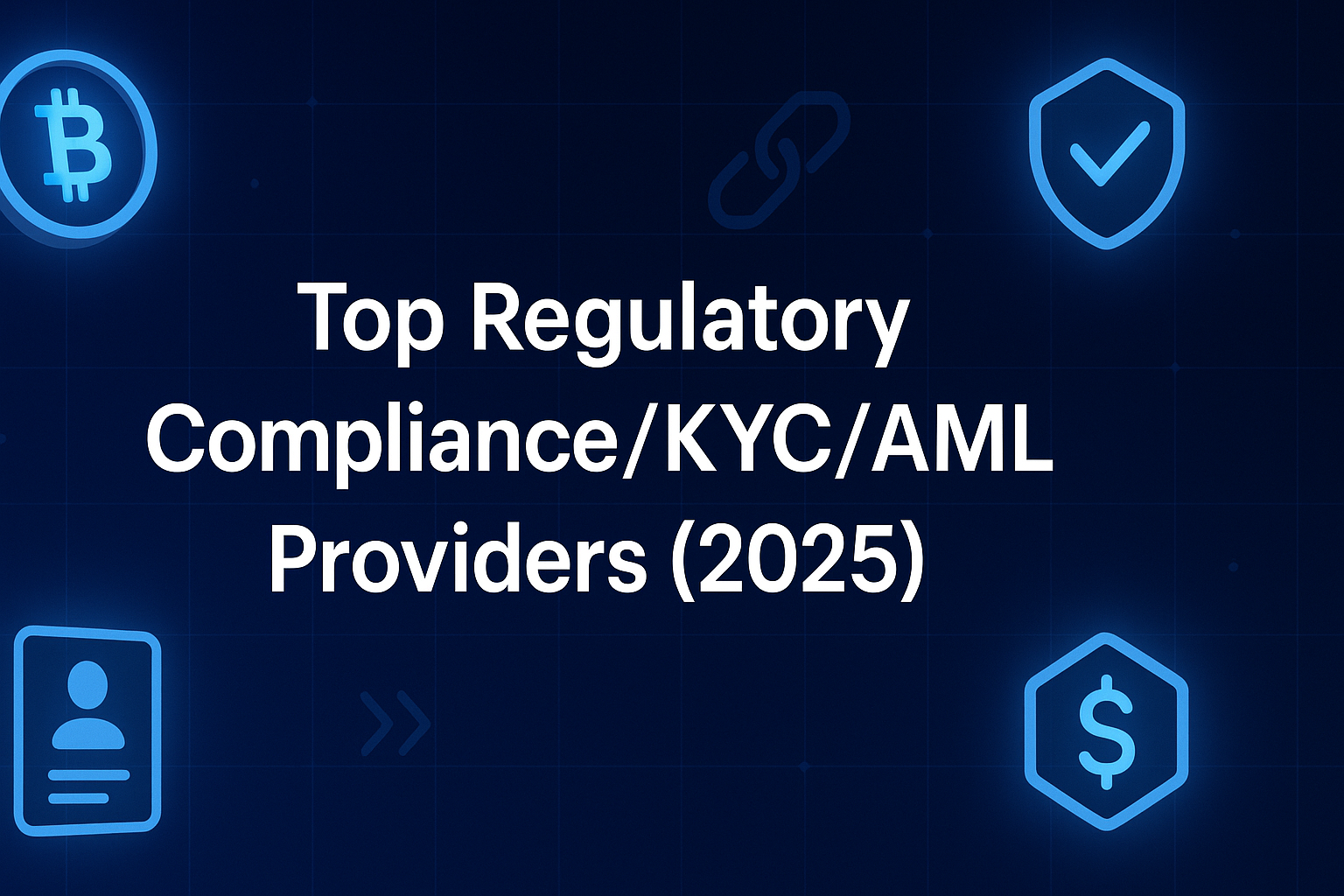
Top Regulatory Compliance/KYC/AML Providers (2025)
%201.svg)
%201.svg)
Why crypto compliance, KYC/AML & blockchain analytics vendors Matters in September 2025
If you operate an exchange, wallet, OTC desk, or DeFi on-ramp, choosing the right KYC/AML providers can be the difference between smooth growth and painful remediation. In 2025, regulators continue to tighten enforcement (Travel Rule, sanctions screening, transaction monitoring), while criminals get more sophisticated across bridges, mixers, and multi-chain hops. This guide shortlists ten credible vendors that help crypto businesses verify users, monitor wallets and transactions, and comply with global rules.
Definition (snippet): KYC/AML providers are companies that deliver identity verification, sanctions/PEP screening, blockchain analytics, transaction monitoring, and Travel Rule tooling so crypto businesses can meet regulatory obligations and reduce financial crime risk.
SECONDARY_KEYWORDS woven below: crypto compliance, blockchain analytics, transaction monitoring, Travel Rule.
How We Picked (Methodology & Scoring)
- What we scored (weights): Market adoption & scale (liquidity 30 as a proxy for coverage & volume handled), security posture 25 (audits, data protection, regulatory alignment), coverage 15 (chains, assets, jurisdictions), costs 15 (pricing transparency, efficiency), UX 10 (API, case mgmt., automation), support 5 (docs, SLAs).
- Data sources: Only official product pages, security/trust centers, and documentation; widely cited market datasets used only to cross-check asset/chain coverage. “Last updated September 2025.” Chainalysis+2TRM Labs+2
Top 10 crypto compliance, KYC/AML & blockchain analytics vendors in September 2025
1. Chainalysis — Best for cross-chain transaction risk & investigations
Why Use It: Chainalysis KYT and Reactor pair broad chain/token coverage with real-time risk scoring and deep investigative tooling. If you need automated alerts on deposits/withdrawals and the ability to trace through bridges/mixers/DEXs, it’s a proven, regulator-recognized stack.
Best For: Centralized exchanges, custodians, banks with crypto exposure, law enforcement teams.
Notable Features: Real-time KYT alerts • Cross-chain tracing • Case management & APIs • Attribution datasets.
Consider If: You want an enterprise-grade standard and investigator workflows under one roof.
Alternatives: TRM Labs, Elliptic. Chainalysis+1
Regions: Global • Fees/Notes: Quote-based, volume/seat tiers.

2. TRM Labs — Best for fast-moving threat intel & sanctions coverage
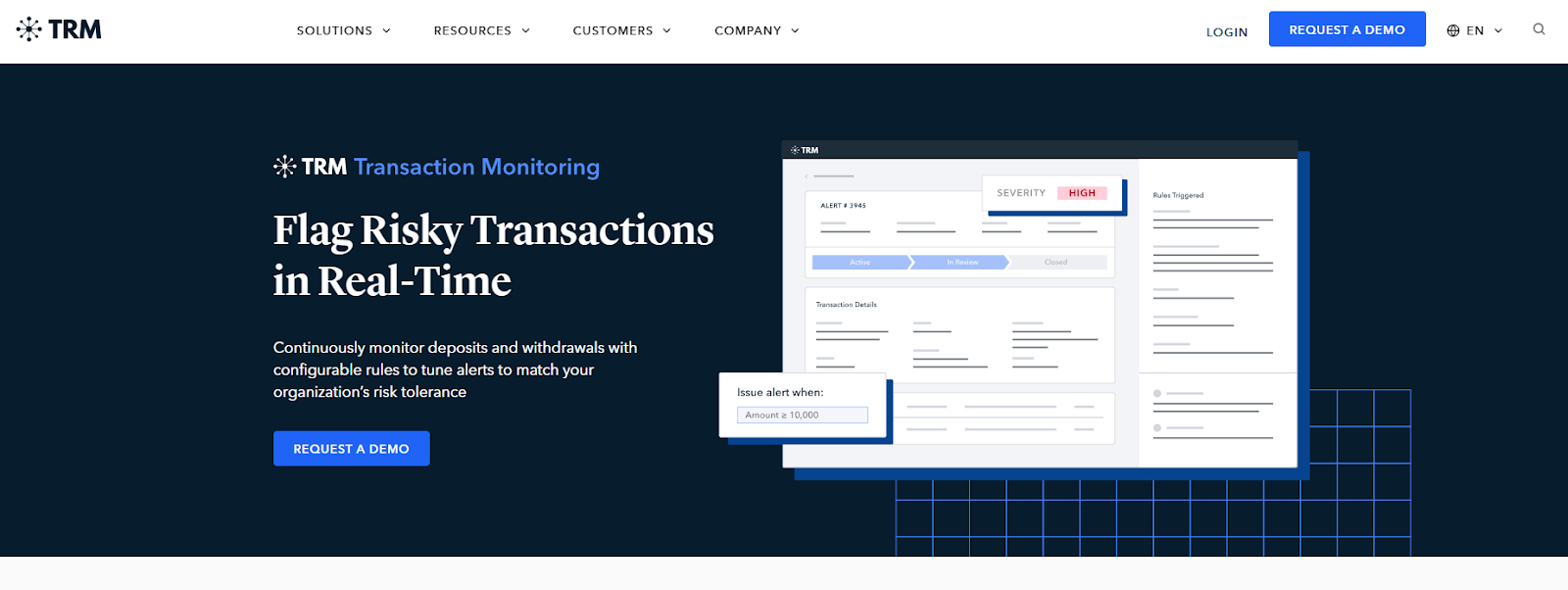
Why Use It: TRM’s transaction monitoring taps a large, fast-growing database of illicit activity and extends screening beyond official lists to include threat actor footprints on-chain. Strong coverage and practical APIs make it easy to plug into existing case systems.
Best For: Exchanges, payment processors, fintechs expanding into web3, risk teams that need flexible rules.
Notable Features: Real-time monitoring • Sanctions & threat actor intelligence • Case mgmt. integrations • Multi-chain coverage.
Consider If: You prioritize dynamic risk models and frequent list updates.
Alternatives: Chainalysis, Elliptic. TRM Labs+1
Regions: Global • Fees/Notes: Enterprise contracts; volume-based.
3. Elliptic — Best for scalable wallet screening at exchange scale
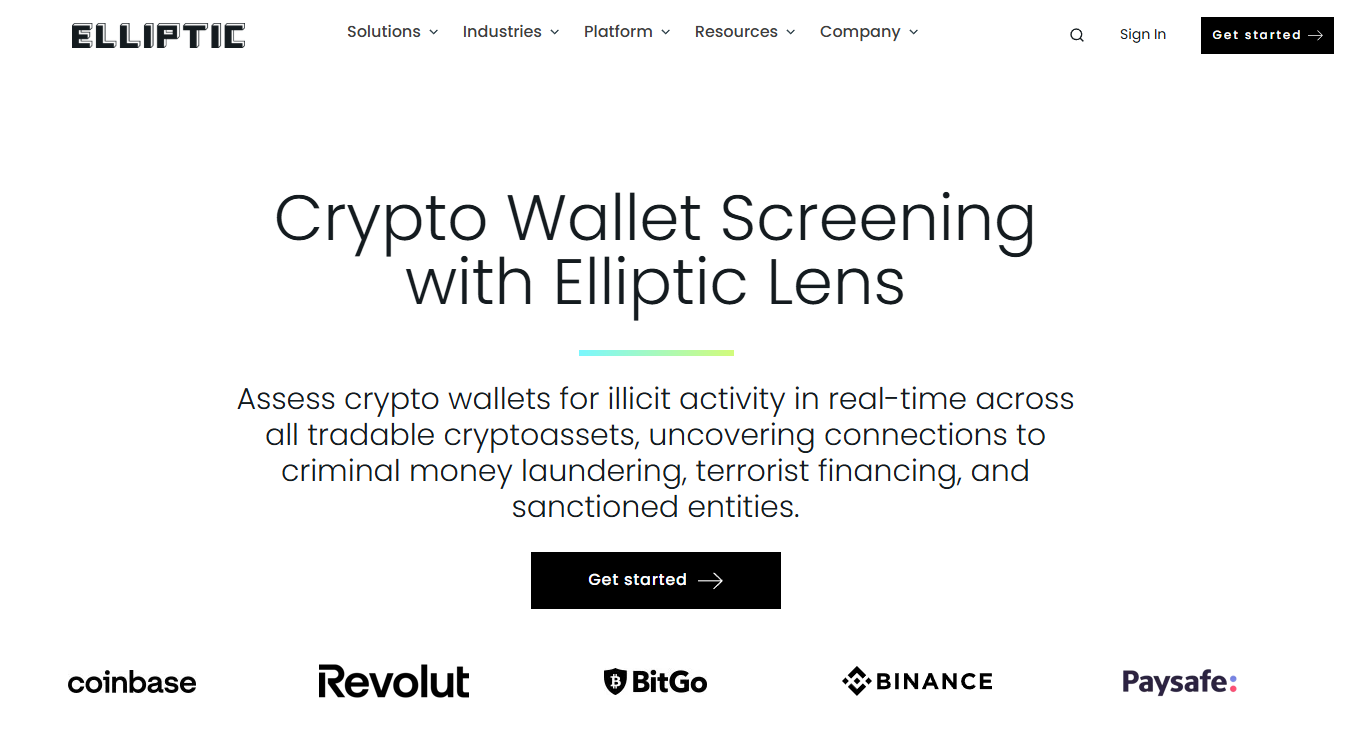
Why Use It: Elliptic’s Lens and Screening solutions streamline wallet/transaction checks with chain-agnostic coverage and audit-ready workflows. It’s built for high-volume screening with clean APIs and strong reporting for regulators and internal audit.
Best For: CEXs, payment companies, institutional custody, risk ops needing bulk screening.
Notable Features: Wallet & TX screening • Cross-chain risk detection • Audit trails • Customer analytics.
Consider If: You need mature address screening and large-scale throughput.
Alternatives: Chainalysis, TRM Labs. Elliptic+1
Regions: Global • Fees/Notes: Quote-based; discounts by volume.
4. ComplyAdvantage — Best for sanctions/PEP/adverse media screening in crypto
Why Use It: An AML data powerhouse for KYC and ongoing monitoring that many crypto companies use to meet screening obligations and reduce false positives. Strong watchlist coverage, adverse media, and continuous monitoring help you satisfy banking partners and auditors.
Best For: Exchanges and fintechs that want robust sanctions/PEP data plus transaction monitoring.
Notable Features: Real-time sanctions & watchlists • Ongoing monitoring • Payment screening • Graph analysis.
Consider If: You want a single vendor for screening + monitoring alongside your analytics stack.
Alternatives: Jumio (Screening), Sumsub. ComplyAdvantage+1
Regions: Global • Fees/Notes: Tiered enterprise pricing.
5. Sumsub — Best all-in-one KYC/KYB + crypto monitoring
Why Use It: Crypto-focused onboarding with liveness, documents, KYB, Travel Rule support, and transaction monitoring—plus in-house legal experts to interpret changing rules. Good for teams that need to orchestrate identity checks and AML controls in one flow.
Best For: Global exchanges, NFT/DeFi ramps, high-growth startups entering new markets.
Notable Features: KYC/KYB • Watchlists/PEPs • Device intelligence • Crypto TX monitoring • Case management.
Consider If: You want one vendor for identity + AML + Travel Rule workflow.
Alternatives: Jumio, ComplyAdvantage. Sumsub+1
Regions: Global • Fees/Notes: Per-verification & volume tiers.
6. Jumio — Best for enterprise-grade identity + AML screening
Why Use It: Jumio combines biometric KYC with automated AML screening (PEPs/sanctions) and ongoing monitoring. Its “KYX” approach provides identity insights across the customer lifecycle, helping reduce fraud while keeping onboarding friction reasonable.
Best For: Regulated exchanges, banks, brokerages with strict KYC/AML controls.
Notable Features: Biometric verification • PEPs/sanctions screening • Ongoing monitoring • Single-API platform.
Consider If: You need global coverage and battle-tested uptime/SLA.
Alternatives: Sumsub, Onfido (not listed). Jumio+1
Regions: Global • Fees/Notes: Custom enterprise pricing.
7. Notabene — Best end-to-end Travel Rule platform
Why Use It: Notabene focuses on pre-transaction decisioning, counterparty VASP due diligence, and sanctions screening across multiple Travel Rule protocols. It’s purpose-built for crypto compliance teams facing enforcement of FATF Recommendation 16.
Best For: Exchanges, custodians, and B2B payment platforms needing Travel Rule at scale.
Notable Features: Pre-TX checks • Counterparty VASP verification • Multi-protocol messaging • Jurisdictional rules engine.
Consider If: Your regulators or banking partners expect full Travel Rule compliance today.
Alternatives: Shyft Veriscope, 21 Analytics. Notabene+1
Regions: Global • Fees/Notes: Annual + usage components.
8. Shyft Network Veriscope — Best decentralized, interoperable Travel Rule messaging
Why Use It: Veriscope provides decentralized VASP discovery, secure VASP-to-VASP PII exchange, and “sunrise issue” lookback to help during uneven global rollouts. Pay-as-you-go pricing can be attractive for newer programs.
Best For: Global VASPs that want decentralized discovery and interoperability.
Notable Features: Auto VASP discovery • Secure PII transfer (no central PII storage) • Lookback support • Interoperability.
Consider If: You prefer decentralized architecture and usage-based pricing.
Alternatives: Notabene, 21 Analytics. shyft.network+1
Regions: Global • Fees/Notes: Pay-as-you-go; no setup fees. shyft.network
9. Merkle Science — Best for predictive blockchain risk analytics
Why Use It: Merkle Science’s platform emphasizes predictive risk modeling and DeFi/smart contract forensics, helping compliance teams see beyond static address tags. Good complement when you monitor emerging chains and token types.
Best For: Exchanges and protocols active in DeFi, new L1/L2 ecosystems, or smart-contract risk.
Notable Features: Predictive risk scores • DeFi & contract forensics • Case tooling • API integrations.
Consider If: You need analytics tuned for newer protocols and token standards.
Alternatives: Chainalysis, TRM Labs. merklescience.com+1
Regions: Global • Fees/Notes: Quote-based enterprise pricing.
10. Scorechain — Best EU-born analytics with audit-ready reporting
Why Use It: Based in Luxembourg, Scorechain offers risk scoring, transaction monitoring, and reporting designed to fit EU frameworks—useful for MiCA/TFR-aligned programs. Teams like the straightforward reporting exports for audits and regulators.
Best For: EU-focused exchanges, neobanks, and tokenization platforms.
Notable Features: Risk scoring • Transaction monitoring • Audit-ready reports • Tools for Travel Rule workflows.
Consider If: Your footprint is primarily EU and you want EU-centric vendor DNA.
Alternatives: Crystal (EU), Elliptic. Scorechain+1
Regions: EU/Global • Fees/Notes: Enterprise licenses; fixed and usage options.
Decision Guide: Best By Use Case
- Regulated U.S. exchange: Chainalysis, TRM Labs
- Global wallet screening at scale: Elliptic
- Enterprise KYC + AML screening combo: Jumio, Sumsub
- Travel Rule (end-to-end ops): Notabene
- Travel Rule (decentralized, pay-as-you-go): Shyft Veriscope
- DeFi/smart-contract forensics: Merkle Science
- EU-centric programs / audit exports: Scorechain
- Sanctions/PEP data depth: ComplyAdvantage
How to Choose the Right crypto compliance, KYC/AML & blockchain analytics vendors (Checklist)
- Jurisdiction & licensing: Confirm the vendor supports your countries and regulator expectations (e.g., FATF R.16 Travel Rule).
- Coverage: Chains/tokens you touch today and plan to touch in 12–18 months.
- Identity depth: Liveness, device checks, KYB for entities, ongoing monitoring.
- Analytics & monitoring: Risk models, false-positive rate, sanctions coverage cadence.
- APIs & workflow: Case management, alert triage, audit trails, BI exports.
- Costs: Pricing model (per-verification, per-alert, or pay-as-you-go).
- Security: Data handling, PII minimization, breach history, regional data residency.
- Red flags: “Black box” risk scores without documentation; no audit logs.
Use Token Metrics With Any crypto compliance, KYC/AML & blockchain analytics vendors
- AI Ratings: Screen assets and spot structural risks before you list.

- Narrative Detection: Track shifts that correlate with on-chain risk trends.
- Portfolio Optimization: Balance exposure as assets pass compliance checks.
- Alerts & Signals: Monitor entries/exits once assets are approved.
Workflow: Research vendors → Select/implement → List/enable assets → Monitor with Token Metrics alerts.

Primary CTA: Start a free trial of Token Metrics.

Security & Compliance Tips
- Enforce 2FA and role-based access for compliance consoles.
- Separate PII from blockchain telemetry; minimize retention.
- Implement Travel Rule pre-transaction checks where required. FATF
- Test sanctions list update cadences and backfill behavior.
- Document SAR/STR processes and case handoffs.
This article is for research/education, not financial advice.
Beginner Mistakes to Avoid
- Picking a vendor with great KYC but no Travel Rule path.
- Ignoring chain/token roadmaps—coverage gaps appear later.
- Under-investing in case management/audit trails.
- Relying solely on address tags without behavior analytics.
- Not budgeting for ongoing monitoring (alerts grow with volume).
FAQs
What’s the difference between KYC and KYT (Know Your Transaction)?
KYC verifies an individual or entity at onboarding and during refresh cycles. KYT/transaction monitoring analyzes wallets and transfers in real time (or post-event) to identify suspicious activity, sanctions exposure, and patterns of illicit finance. TRM Labs
Do I need a Travel Rule solution if I only serve retail in one country?
Possibly. Many jurisdictions apply the Travel Rule above certain thresholds and when sending to other VASPs, even domestically. If you interoperate with global exchanges or custodians, you’ll likely need it. Notabene
How do vendors differ on sanctions coverage?
Screening providers update against official lists and, in some cases, extend coverage using intelligence on known threat actors’ wallets. Look for rapid refresh cycles and retroactive screening. TRM Labs
Can I mix-and-match KYC and blockchain analytics vendors?
Yes. Many teams use a KYC/AML screening vendor plus a blockchain analytics platform; some suites offer both, but best-of-breed mixes are common.
What’s a good starting stack for a new exchange?
A KYC/KYB vendor (Jumio or Sumsub), a sanctions/PEP screening engine (ComplyAdvantage or your KYC vendor’s module), a blockchain analytics platform (Chainalysis/TRM/Elliptic), and a Travel Rule tool (Notabene or Veriscope).
Conclusion + Related Reads
Compliance isn’t one tool; it’s a stack. If you’re U.S.-regulated and high-volume, start with Chainalysis or TRM plus Jumio or Sumsub. If you’re EU-led, Scorechain can simplify audits. For Travel Rule, choose Notabene (end-to-end) or Veriscope (decentralized/pay-as-you-go). Pair your chosen stack with Token Metrics to research, monitor, and act with confidence.
Related Reads:
- Best Cryptocurrency Exchanges 2025
- Top Derivatives Platforms 2025
- Top Institutional Custody Providers 2025
Sources & Update Notes
We independently reviewed official product pages, docs, and security/trust materials for each provider (no third-party links in body). Shortlist refreshed September 2025; we’ll revisit as regulations, features, and availability change.
- Chainalysis — KYT product; platform overview. Chainalysis+1
- TRM Labs — Transaction Monitoring; platform overview; glossary. TRM Labs+2TRM Labs+2
- Elliptic — Lens (wallet screening); Screening solution. Elliptic+1
- ComplyAdvantage — Crypto AML; sanctions & watchlists; platform. ComplyAdvantage+2ComplyAdvantage+2
- Sumsub — Crypto KYC; Crypto Monitoring. Sumsub+1
- Jumio — AML Screening; Platform; KYC & AML use case. Jumio+2Jumio+2
- Notabene — Travel Rule compliance; jurisdiction tracker. Notabene+1
- Shyft Veriscope — Product page; docs. shyft.network+1
- Merkle Science — Platform overview; investigations features. merklescience.com+1
Scorechain — Product pages & glossary resources. Scorechain+1

Best Crypto Law Firms (2025)
%201.svg)
%201.svg)
Why law firms for crypto, blockchain & digital assets matter in September 2025
If you touch tokens, stablecoins, exchanges, DeFi, custody, or tokenized RWAs, your choice of counsel can make or break the roadmap. This guide ranks the best crypto law firms for 2025, with a practical look at who they’re best for, where they operate, and what to consider on fees, scope, and risk. In one line: a crypto law firm is a multidisciplinary legal team that advises on digital asset regulation, transactions, investigations, and disputes.
Macro backdrop: the U.S. regulatory stance is shifting (e.g., an SEC crypto task force and fresh policy signals), while the EU’s MiCA, UK rules, and APAC regimes continue to evolve—raising the stakes for compliant go-to-market and ops. Sidley Austin+1
How We Picked (Methodology & Scoring)
- Scale (mapped from “liquidity,” 30%): depth of bench across regulatory, corporate, enforcement, litigation, restructuring.
- Security posture (25%): track record in compliance, investigations, audits, risk, and controls.
- Coverage (15%): multi-jurisdictional reach (US/EU/APAC), ability to coordinate cross-border matters.
- Costs (15%): transparency on scoping; ability to structure work efficiently for stage and size.
- UX (10%): clarity, speed, practical guidance for founders and institutions.
- Support (5%): responsiveness; client tools (trackers, hubs, resource centers).
Data sources: official firm practice pages, security/regulatory hubs, and disclosures; third-party market datasets used only as cross-checks. Last updated: September 2025.
Top 10 law firms for crypto, blockchain & digital assets in September 2025
1. Latham & Watkins — Best for full-stack, cross-border matters

- Why Use It: Latham’s Digital Assets & Web3 team spans regulatory, transactions, and litigation, with dedicated coverage of exchanges, infrastructure providers, miners, DAOs, and tokenization. Deep financial regulatory and tech bench supports complex, global plays. lw.com+1
- Best For: Global operators; exchanges/market infrastructure; tokenization/RWA; enterprise Web3.
- Notable Features: Global financial regulatory team; DAO/NFT/DeFi expertise; structured products/derivatives; privacy/cybersecurity support. lw.com+2lw.com+2
- Consider If: Premium BigLaw pricing; scope thoroughly.
- Regions: Global
- Fees Notes: Bespoke; request scoping and staged budgets.
- Alternatives: Skadden, A&O Shearman
2. Davis Polk & Wardwell — Best for U.S. regulatory strategy & market structure
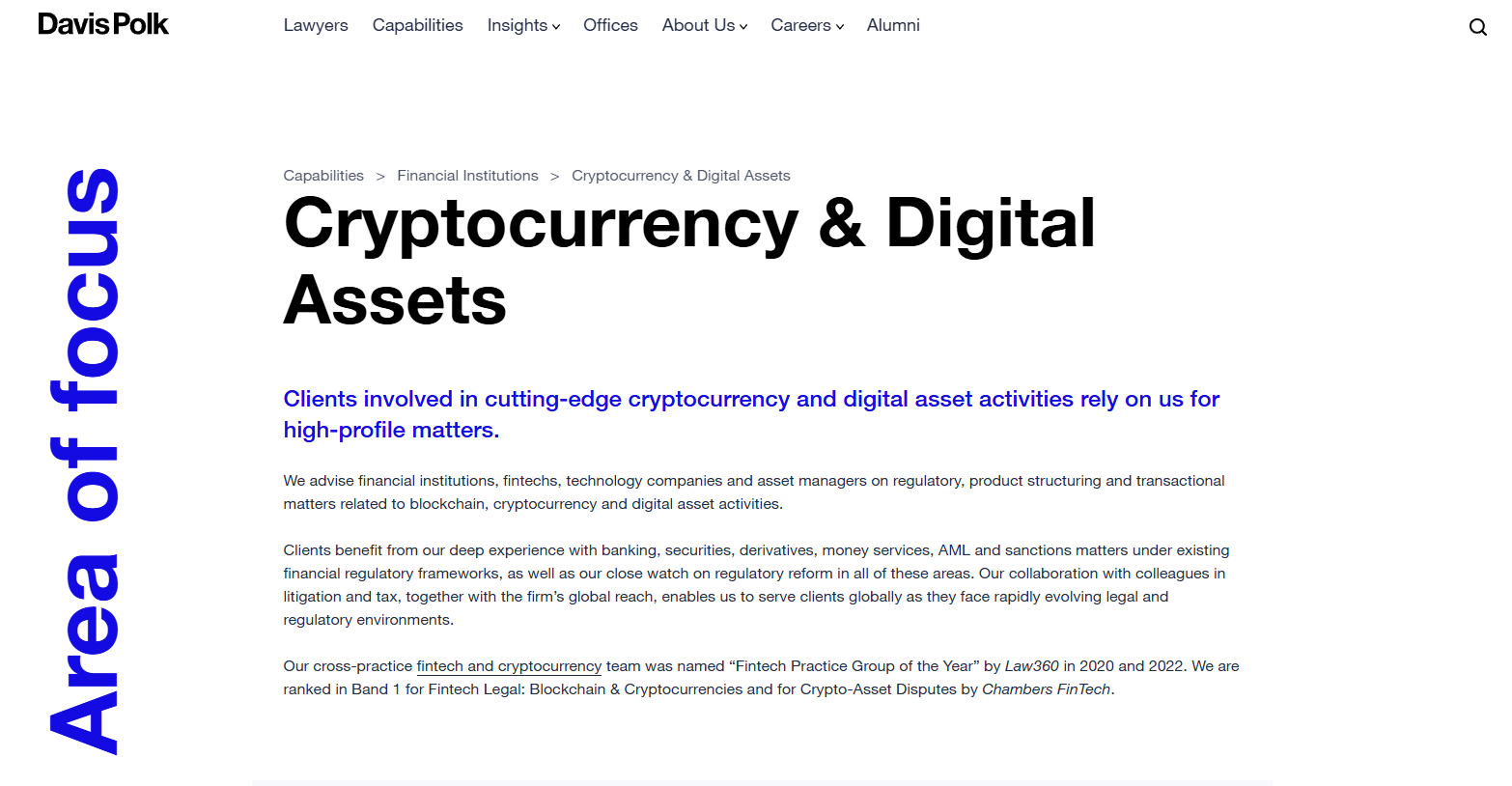
- Why Use It: Longstanding financial institutions focus with crypto trading, custody, and product structuring experience; maintains a public Crypto Regulation Hub and frequent client updates. Strong SEC/CFTC/ETP literacy. Davis Polk+2Davis Polk+2
- Best For: Banks/broker-dealers; asset managers/ETPs; trading venues; fintechs.
- Notable Features: Product structuring; payments & market infra; bank/BD/ATS issues; policy tracking. Davis Polk
- Consider If: Focus is primarily U.S.; engage local counsel for APAC.
- Regions: US/EU (with partner firms)
- Fees Notes: Premium; ask about blended rates and caps for regulatory sprints.
- Alternatives: Sidley, WilmerHale
3. Skadden, Arps, Slate, Meagher & Flom LLP — Best for complex deals, enforcement & high-stakes disputes

- Why Use It: Broad digital assets group spanning DeFi, L2s, NFTs, stablecoins, DAOs, and custody—plus capital markets and investigations. Recent materials highlight breadth across technology transactions, privacy, and regulatory. Skadden+1
- Best For: Public companies; unicorns; exchanges; token/NFT platforms.
- Notable Features: SEC/NYDFS engagement; funds formation; tax and privacy guidance; M&A/capital markets. Skadden
- Consider If: Suited to complex or contentious matters; pricing reflects that.
- Regions: Global
- Fees Notes: Matter-based staffing; clarify discovery/enforcement budgets early.
- Alternatives: Latham, Quinn Emanuel
4. Sidley Austin LLP — Best for licensing, payments & U.S.–EU regulatory strategy
- Why Use It: Multidisciplinary fintech/blockchain team with strong money transmission, securities, broker-dealer, and global regulatory capabilities; publishes timely bulletins on fast-moving U.S. policy. Sidley Austin+2Sidley Austin+2
- Best For: Payments/MTLs; trading venues; funds/advisers; tokenization pilots.
- Notable Features: Fund formation; AML program design; cross-border counsel (SEC, CFTC, FINRA; UK/HK/EU). Sidley Austin
- Consider If: Heavier on financial-services lens; ensure web3 product counsel is in scope.
- Regions: US/EU/APAC
- Fees Notes: Ask about fixed-fee licensing packages.
- Alternatives: Davis Polk, Hogan Lovells
5. A&O Shearman — Best for multi-jurisdictional matters across US/UK/EU
- Why Use It: The merged transatlantic firm offers a deep digital assets bench spanning banking, markets, disputes, and restructuring, with active insights on fintech and crypto. A&O Shearman+2A&O Shearman+2
- Best For: Global exchanges and issuers; banks/EMIs; cross-border investigations; MiCA + U.S. buildouts.
- Notable Features: UK/EU licensing; U.S. markets issues; contentious & non-contentious coverage under one roof. A&O Shearman
- Consider If: Validate local counsel for non-core APAC jurisdictions.
- Regions: Global
- Fees Notes: Expect BigLaw rates; request phased milestones.
- Alternatives: Latham, Hogan Lovells
6. Perkins Coie LLP — Best for builders & early-stage web3
- Why Use It: One of the earliest major-firm blockchain groups; counsels across projects, fintech/payments, and enforcement, and maintains public regulatory trackers and timelines. Perkins Coie+1
- Best For: Protocol teams; startups; marketplaces; payments/fintechs.
- Notable Features: SEC/CFTC timelines; global regulatory trackers; AML/sanctions and licensing support. Perkins Coie
- Consider If: For late-stage, compare bench size on multi-jurisdiction disputes.
- Regions: US with global reach
- Fees Notes: Often startup-friendly scoping; confirm billing model.
- Alternatives: Cooley, Wilson Sonsini
7. Kirkland & Ellis LLP — Best for funds, M&A and restructuring overlays
- Why Use It: Market-leading platform for investment funds, M&A, investigations, and restructurings—useful when crypto intersects with bankruptcy, PE, or complex transactions. Global footprint with expanding broker-dealer and exchange experience. Kirkland & Ellis LLP+2Kirkland & Ellis LLP+2
- Best For: Funds/asset managers; distressed situations; strategic M&A; enterprise pivots.
- Notable Features: Government/regulatory investigations; investment funds; global disputes and restructuring. Kirkland & Ellis LLP
- Consider If: No single “crypto hub” page—confirm dedicated team for token issues up front.
- Regions: Global
- Fees Notes: Complex matters = premium; align on discovery scope.
- Alternatives: Skadden, Quinn Emanuel
8. Cooley LLP — Best for venture-backed startups & token launches
- Why Use It: Tech-first firm with robust startup and capital markets DNA; advises on MiCA/FCA regimes in Europe and U.S. compliance for tokenization. Cooley+2Cooley+2
- Best For: Seed-to-growth startups; token/NFT platforms; enterprise pilots.
- Notable Features: Company formation to IPO; MiCA/FCA guidance; policy insights; product counseling. Cooley
- Consider If: For heavy U.S. enforcement, compare with litigation-heavy peers.
- Regions: US/EU
- Fees Notes: Startup-friendly playbooks; discuss fixed-fee packages.
- Alternatives: Perkins Coie, Wilson Sonsini
9. WilmerHale — Best for investigations, enforcement & policy engagement
- Why Use It: Deep securities, futures, and derivatives roots; active “Crypto Currently” news center and webinars reflect policy fluency and regulator-facing experience. WilmerHale+2WilmerHale+2
- Best For: Public companies; trading venues; market infra; sensitive investigations.
- Notable Features: SEC/CFTC enforcement defense; policy monitoring; litigation and appellate support. WilmerHale
- Consider If: Suited to complex/contested matters; ensure day-to-day ops support is included.
- Regions: US/EU
- Fees Notes: Premium; align on incident response budget.
- Alternatives: Davis Polk, Sidley
10. Hogan Lovells — Best for global licensing, sanctions & public policy
- Why Use It: Global digital assets team with dedicated Digital Assets & Blockchain Hub, frequent payments/PSD3/MiCA insights, and public policy depth—useful for cross-border licensing and government engagement. www.hoganlovells.com+2digital-client-solutions.hoganlovells.com+2
- Best For: Global exchanges/EMIs; banks; tokenization programs; policy-heavy strategies.
- Notable Features: Multi-jurisdiction licensing; sanctions/AML; disputes and arbitration; regulatory trackers. digital-client-solutions.hoganlovells.com
- Consider If: BigLaw pricing; clarify deliverables for fast-moving launches.
- Regions: Global
- Fees Notes: Ask about phased licensing workstreams.
- Alternatives: A&O Shearman, Sidley
Decision Guide: Best By Use Case
- Regulated U.S. market structure (venues, ETPs): Davis Polk, WilmerHale
- Global, enterprise-grade multi-workstream: Latham, A&O Shearman
- Complex deals, investigations & disputes: Skadden, Kirkland
- Payments & money transmission licensing: Sidley, Hogan Lovells
- Startup & token launch playbooks: Perkins Coie, Cooley
- Litigation-first backup (if contested): Skadden; consider Quinn Emanuel as an alternative (not listed in Top 10)
How to Choose the Right Law Firm (Checklist)
- Jurisdictions you operate in (US/EU/APAC) and regulators you’ll face.
- Scope: corporate, regulatory, enforcement, litigation, restructuring—do they cover your stack?
- Security & compliance posture: AML/sanctions, custody rules, broker-dealer/adviser obligations.
- Fees: insist on scoping, budgets, and milestones; ask about blended rates or fixed-fee modules.
- Team: named partners + day-to-day associates; response times and communication norms.
- Tooling: client hubs/trackers and policy updates.
- Red flags: vague scope, no cross-border coordination, or “we’ve never done X in Y jurisdiction.”
Use Token Metrics With Any Law Firm
- AI Ratings to screen counterparties and venue risk.

- Narrative Detection to spot flows and policy-driven momentum.
- Portfolio Optimization to balance risk around regulatory events.
- Alerts/Signals to time entries/exits when legal catalysts hit.
Workflow: Research → Select → Execute with your firm → Monitor with alerts.
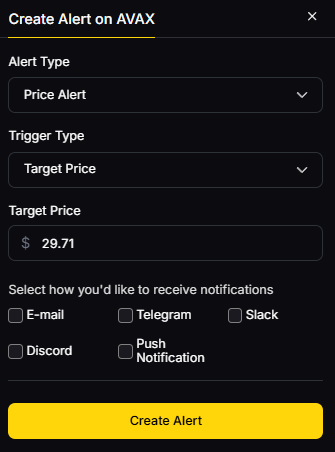
Primary CTA: Start free trial

Security & Compliance Tips
- Enforce strong 2FA and role-based access on exchange/broker accounts counsel touches.
- Set custody architecture and segregation early (on/off-exchange, MPC/HSM, signers).
- Complete KYC/AML and travel rule readiness; map licensure (e.g., MTL, MiCA).
- Use written RFQs/SOWs; document advice paths for auditability.
- Maintain wallet hygiene: least-privilege, whitelists, and incident playbooks.
This article is for research/education, not financial advice.
Beginner Mistakes to Avoid
- Hiring “general corporate” counsel for a regulatory problem.
- Under-scoping licensing (e.g., money transmission, broker-dealer, MiCA).
- Treating enforcement as PR—engage litigation/ex-government experience early.
- Launching tokens without jurisdictional analysis and disclosures.
- No budget guardrails: failing to phase work or set milestones.
FAQs
What does a crypto law firm actually do?
They advise on token and product structuring, licensing (e.g., money transmission, MiCA), securities/commodities issues, AML/sanctions, and handle investigations, litigation, deals, and restructurings. Many also publish policy trackers and hubs to keep clients current. Davis Polk+2Perkins Coie+2
How much do top crypto law firms cost?
Rates vary by market and complexity. Expect premium pricing for multi-jurisdictional or contested matters. Ask for detailed scopes, blended rates, and fixed-fee modules for licensing or audits.
Do I need a U.S. firm if I’m launching in the EU under MiCA?
Often yes—especially if you have U.S. users, listings, or investors. Use an EU lead for MiCA, coordinated with U.S. counsel for extraterritorial touchpoints and future expansion. Cooley
Which firms are strongest for enforcement risk?
WilmerHale, Davis Polk, Skadden, and Sidley bring deep SEC/CFTC literacy and investigations experience; assess fit by recent publications and team bios. Sidley Austin+3WilmerHale+3Davis Polk+3
Can these firms help with tokenization and RWAs?
Yes. Look for demonstrated work on structured products/derivatives, custody, and financial-market infrastructure, plus privacy/cyber overlays. lw.com
Conclusion + Related Reads
For U.S. market structure or sensitive investigations, Davis Polk and WilmerHale are hard to beat. For global, multi-workstream matters, start with Latham or A&O Shearman. Builders and venture-backed teams often pair Perkins Coie or Cooley with a litigation-ready option like Skadden. Whatever you choose, scope tightly, budget in phases, and align counsel with your roadmap.
Related Reads:
- Best Cryptocurrency Exchanges 2025
- Top Derivatives Platforms 2025
- Top Institutional Custody Providers 2025
Sources & Update Notes
We reviewed official digital-asset/fintech practice pages, firm resource hubs, and recent official insights; no third-party sites were linked in-body. Updated September 2025 for U.S. policy changes and EU MiCA implementation status.
- Latham & Watkins — “Digital Assets & Web3 Lawyers”; “Financial Regulatory.” lw.com+1
- Davis Polk — “Cryptocurrency & Digital Assets”; “Crypto Regulation Hub.” Davis Polk+1
- Skadden — “Blockchain and Digital Assets” (site + brochure). Skadden+1
- Sidley Austin — “Fintech”; “Blockchain” capabilities; recent Blockchain Bulletin. Sidley Austin+2Sidley Austin+2
- A&O Shearman — “Digital assets lawyers”; “A&O Shearman on fintech and digital assets”; digital assets brochure. A&O Shearman+2A&O Shearman+2
- Perkins Coie — “Blockchain & Digital Assets” + regulatory trackers. Perkins Coie+1
- Kirkland & Ellis — “Financial Technology (FinTech)” + firm capabilities and news. Kirkland & Ellis LLP+2Kirkland & Ellis LLP+2
- Cooley — “Blockchain Technology & Tokenization”; EU MiCA insights. Cooley+1
- WilmerHale — “Blockchain and Cryptocurrency”; Crypto Currently resources. WilmerHale+1
Hogan Lovells — “Digital Assets and Blockchain”; Digital Assets & Blockchain Hub; Payments newsletter. www.hoganlovells.com+2digital-client-solutions.hoganlovells.com+2


Get Your Brand in Front of 150,000+ Crypto Investors!




 Create Your Free Account
Create Your Free Account9450 SW Gemini Dr
PMB 59348
Beaverton, Oregon 97008-7105 US
.svg)
No Credit Card Required


Online Payment


SSL Encrypted
.png)
Products
Subscribe to Newsletter
Token Metrics Media LLC is a regular publication of information, analysis, and commentary focused especially on blockchain technology and business, cryptocurrency, blockchain-based tokens, market trends, and trading strategies.
Token Metrics Media LLC does not provide individually tailored investment advice and does not take a subscriber’s or anyone’s personal circumstances into consideration when discussing investments; nor is Token Metrics Advisers LLC registered as an investment adviser or broker-dealer in any jurisdiction.
Information contained herein is not an offer or solicitation to buy, hold, or sell any security. The Token Metrics team has advised and invested in many blockchain companies. A complete list of their advisory roles and current holdings can be viewed here: https://tokenmetrics.com/disclosures.html/
Token Metrics Media LLC relies on information from various sources believed to be reliable, including clients and third parties, but cannot guarantee the accuracy and completeness of that information. Additionally, Token Metrics Media LLC does not provide tax advice, and investors are encouraged to consult with their personal tax advisors.
All investing involves risk, including the possible loss of money you invest, and past performance does not guarantee future performance. Ratings and price predictions are provided for informational and illustrative purposes, and may not reflect actual future performance.




%201.svg)

